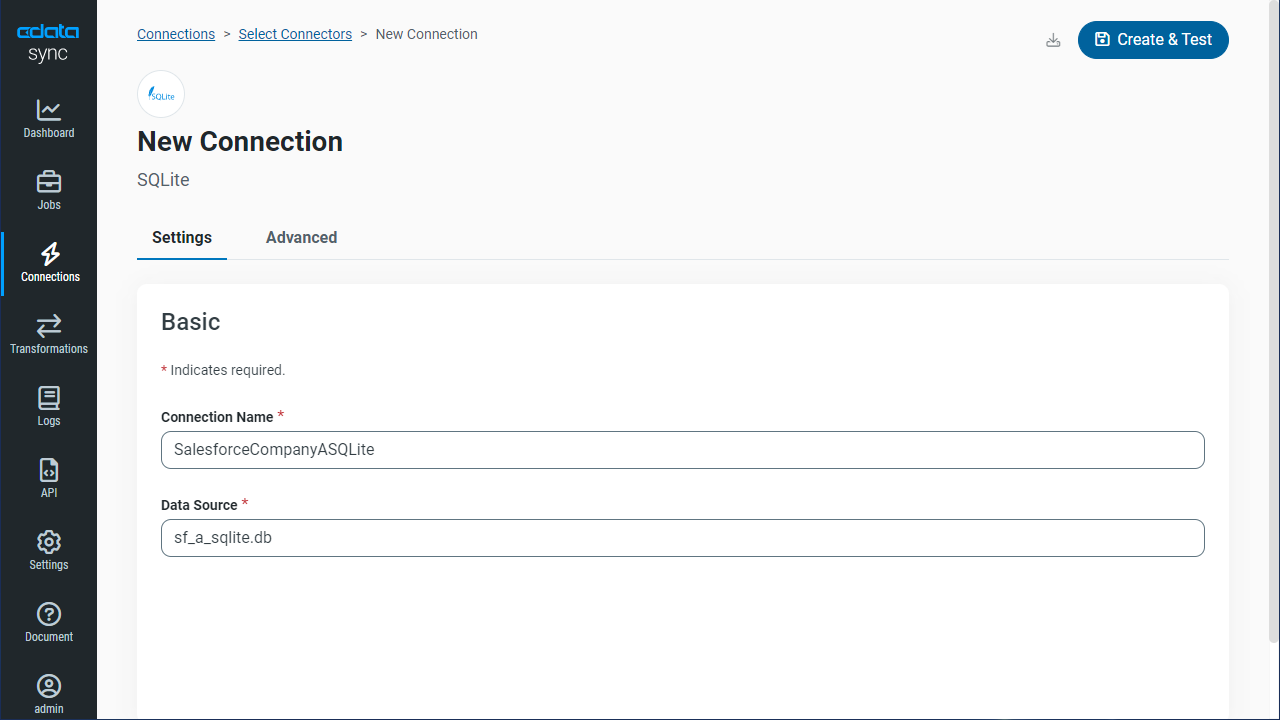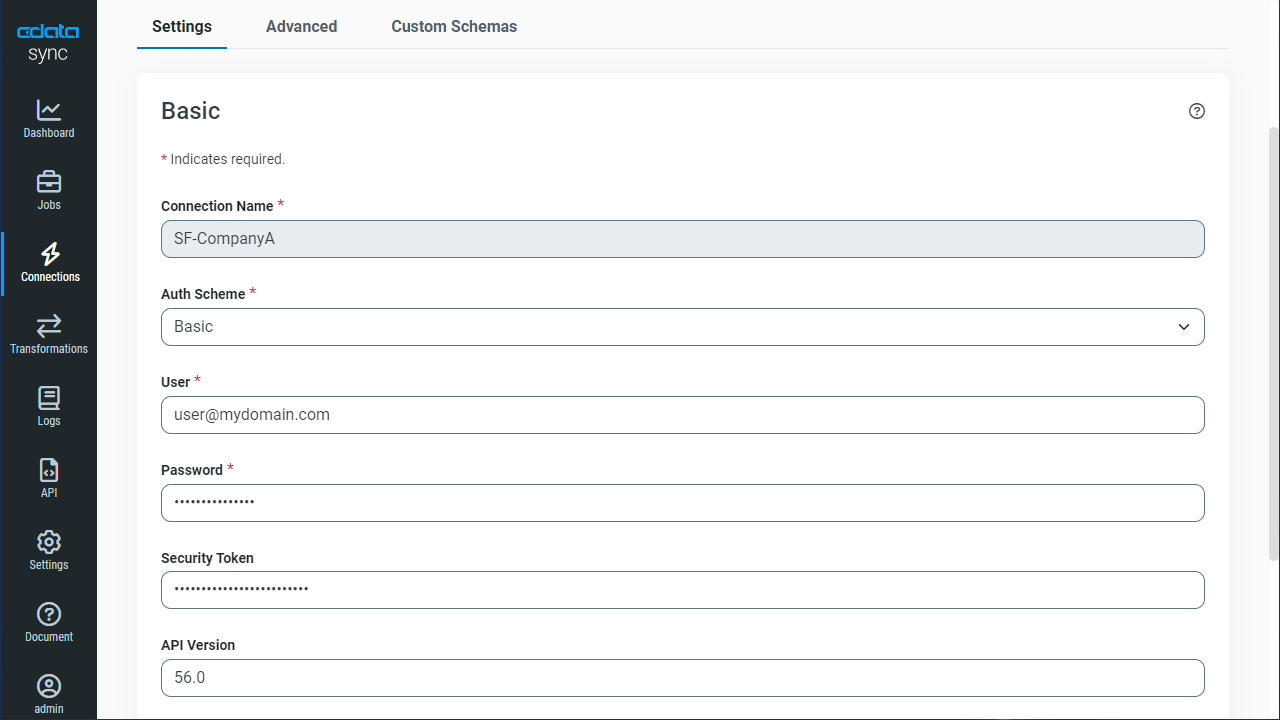Discover how a bimodal integration strategy can address the major data management challenges facing your organization today.
Get the Report →Replicate Multiple Aha Accounts
Replicate multiple Aha accounts to one or many databases.
CData Sync is a stand-alone application that provides solutions for a variety of replication scenarios such as replicating sandbox and production instances into your database. CData Sync includes a web-based interface that makes it easy to manage multiple Aha connections. In this article we show how to use the web app to replicate multiple Aha accounts to a single database.
Configure the Replication Destination
Using CData Sync, you can replicate Aha data to any number of databases, both cloud-based and on-premises. To add a replication destination, navigate to the Connections tab.
- Click Add Connection.
- Select a destination and enter the necessary connection properties. In this article, we use SQLite.
- Enter the necessary connection properties. To replicate Aha to a SQLite database, enter a file path in the Data Source box.
- Click Test Connection to ensure that the connection is configured properly.
![Configure a Destination connection (SQLite is shown).]()
- Click Save Changes.
Configure Aha Connections
You can configure connections to Aha from the Connections tab. To add a connection to one of your Aha accounts, navigate to the Connections tab. For each Aha account you wish to replicate, do the following:
- Click Add Connection.
- Select a source (Aha).
- Configure the connection properties.
Start by setting the Profile connection property to the location of the Aha! Profile on disk (e.g. C:\profiles\aha.apip). Next, set the ProfileSettings connection property to the connection string for Aha! (see below).
Aha! API Profile Settings
The Aha! API uses OAuth-based authentication.
You will first need to register an OAuth app with Aha!. This can be done from your Aha! account under 'Settings' > 'Personal' > 'Developer' > 'OAuth Applications'. Additionally, you will need to set the Domain, found in the domain name of your Aha account. For example if your Aha account is acmeinc.aha.io, then the Domain should be 'acmeinc'.
After setting the following in the connection string, you are ready to connect:
- AuthScheme: Set this to OAuth.
- InitiateOAuth: Set this to GETANDREFRESH. You can use InitiateOAuth to manage the process to obtain the OAuthAccessToken.
- OAuthClientId: Set this to the client_id that is specified in you app settings.
- OAuthClientSecret: Set this to the client_secret that is specified in you app settings.
- CallbackURL: Set this to the Redirect URI you specified in your app settings.
- Domain: Set this in the ProfileSettings to your Aha domain.
![Configure a Source connection (Salesforce is shown).]()
- Click Connect to ensure that the connection is configured properly.
- Click Save Changes.
Configure Queries for Each Aha Instance
CData Sync enables you to control replication with a point-and-click interface and with SQL queries. To configure a replication, navigate to the Jobs tab and click Add Job. Select the Source and Destination for your replication.
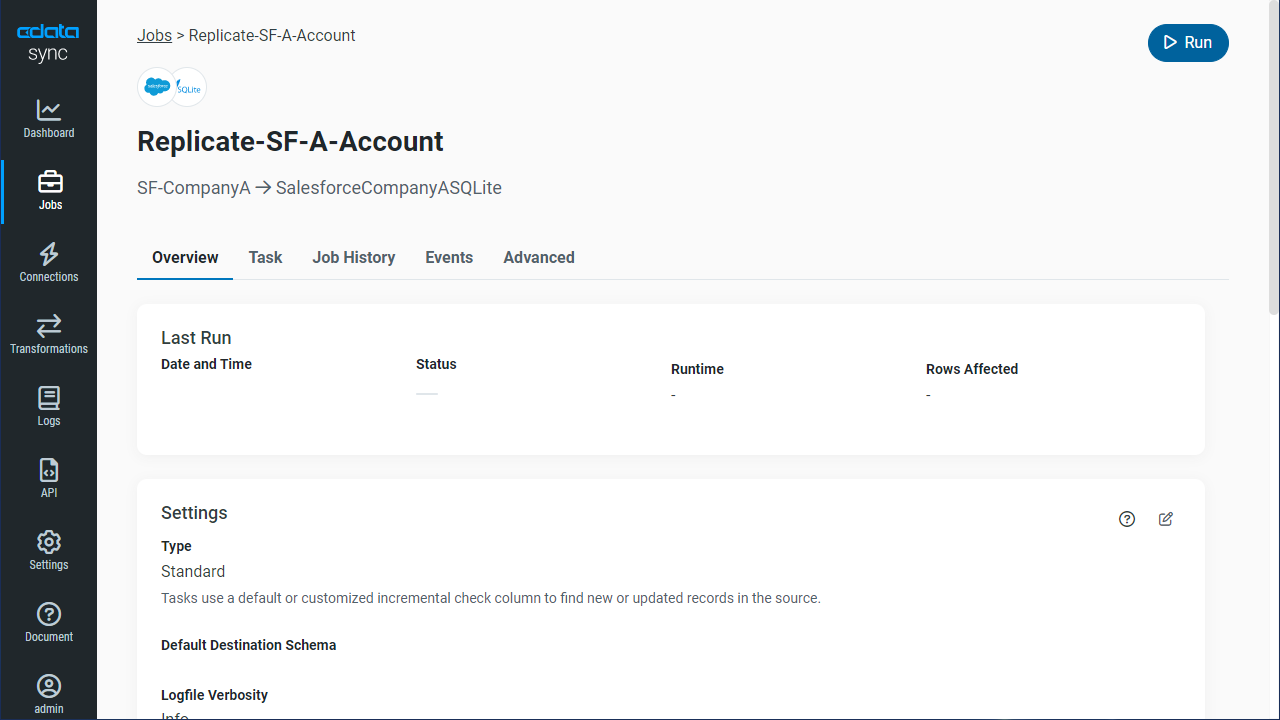
Replicate Entire Tables
To replicate an entire table, click Add Tables in the Tables section, choose the table(s) you wish to replicate, and click Add Selected Tables.
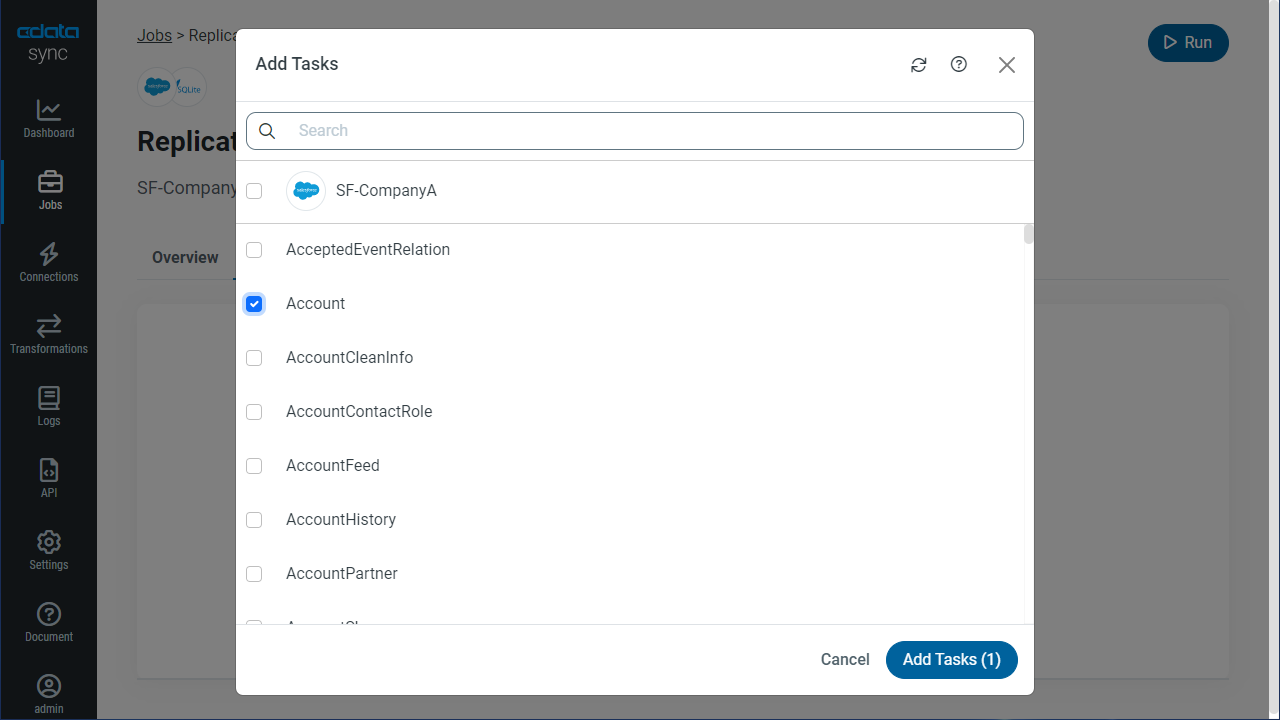
Customize Your Replication
You can use a SQL query to customize your replication. The REPLICATE statement is a high-level command that caches and maintains a table in your database. You can define any SELECT query supported by the Aha API. To customize your replication, click Add Custom Query in the Tables section and define the Query Statement.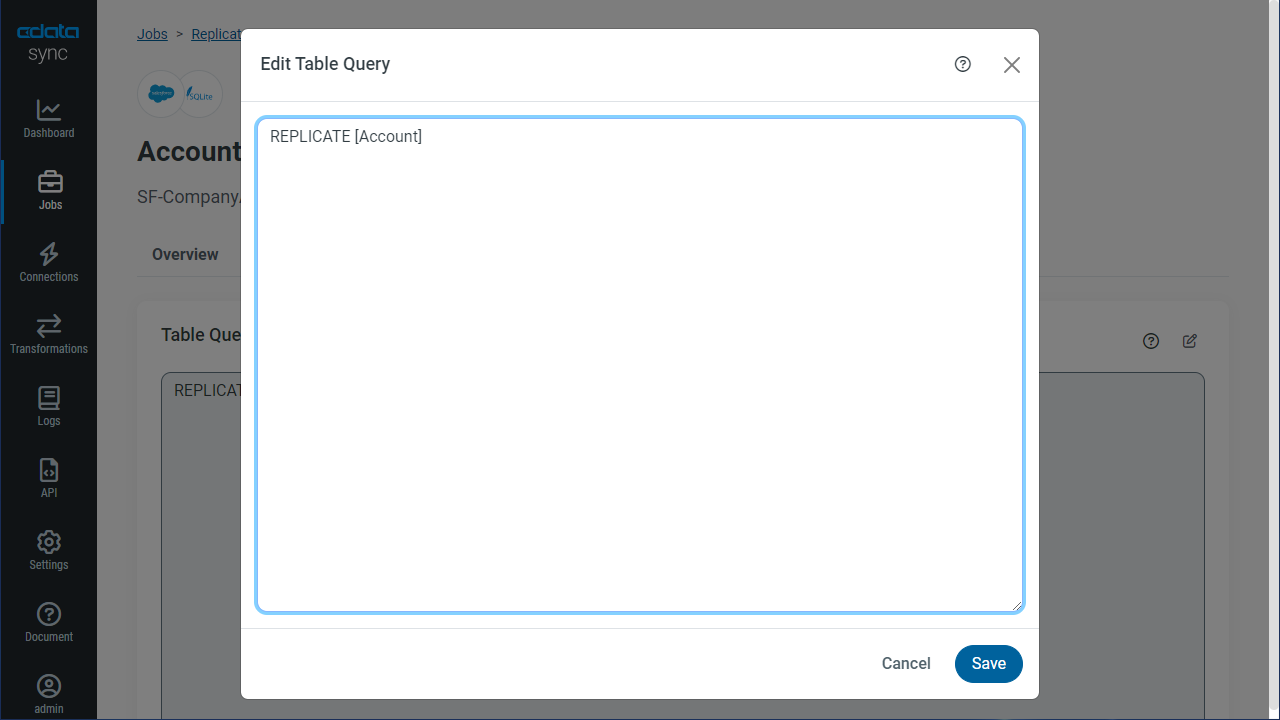
The statement below caches and incrementally updates a table of Aha data:
REPLICATE Ideas;
You can specify a file containing the replication queries you want to use to update a particular database. Separate replication statements with semicolons. The following options are useful if you are replicating multiple Aha accounts into the same database:
-
Use a different table prefix in the REPLICATE SELECT statement:
REPLICATE PROD_Ideas SELECT * FROM Ideas; -
Alternatively, use a different schema:
REPLICATE PROD.Ideas SELECT * FROM Ideas;
Schedule Your Replication
In the Schedule section, you can schedule a job to run automatically, configuring the job to run after specified intervals ranging from once every 10 minutes to once every month.
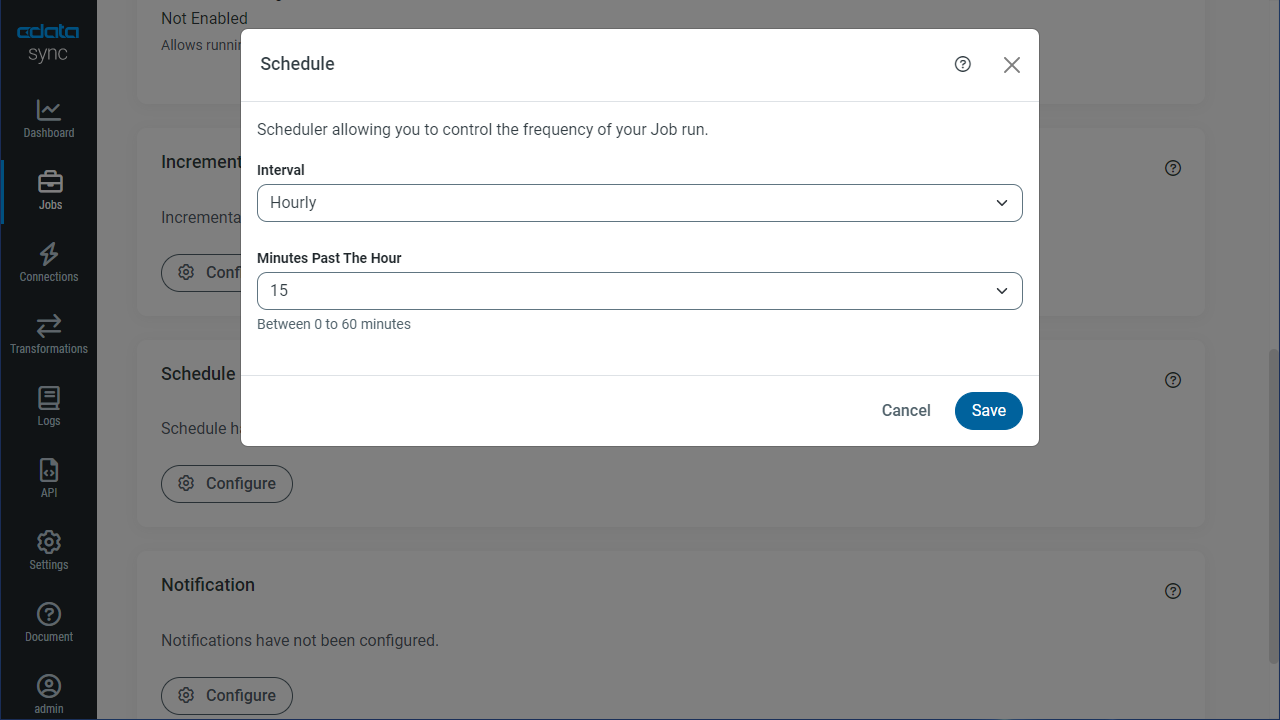
Once you have configured the replication job, click Save Changes. You can configure any number of jobs to manage the replication of the data from your different Aha accounts.






